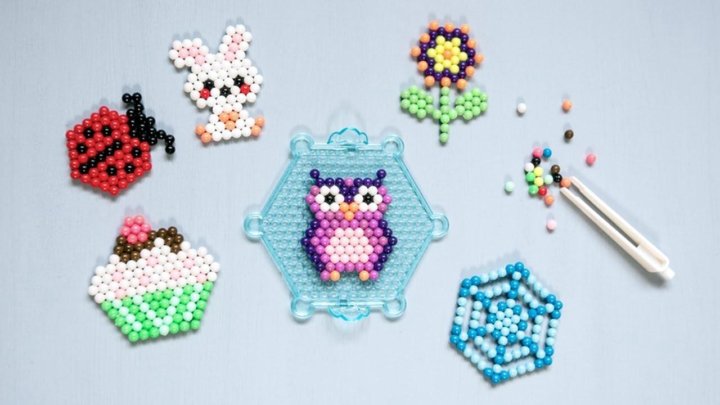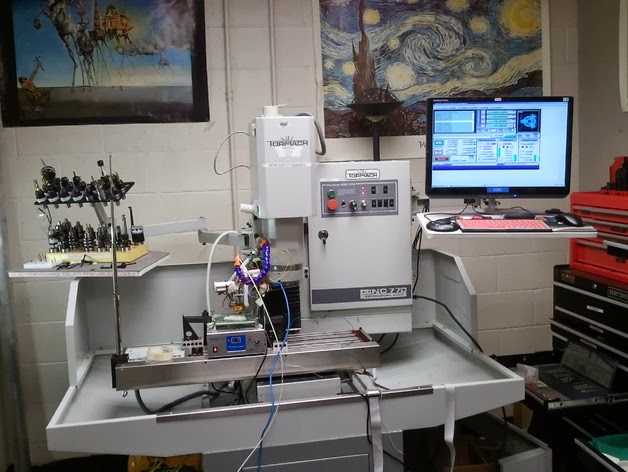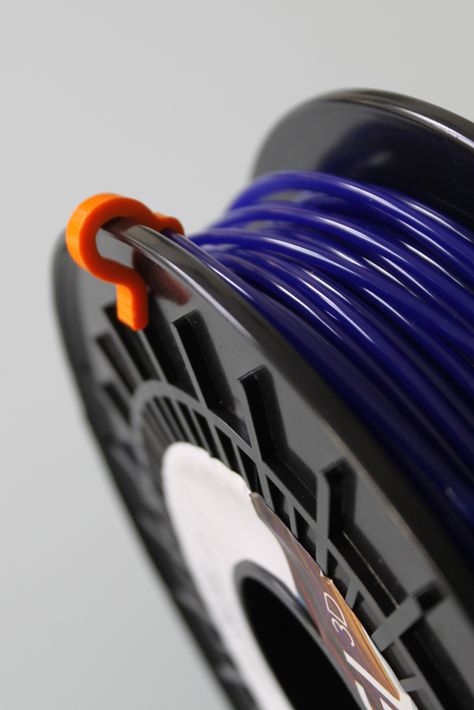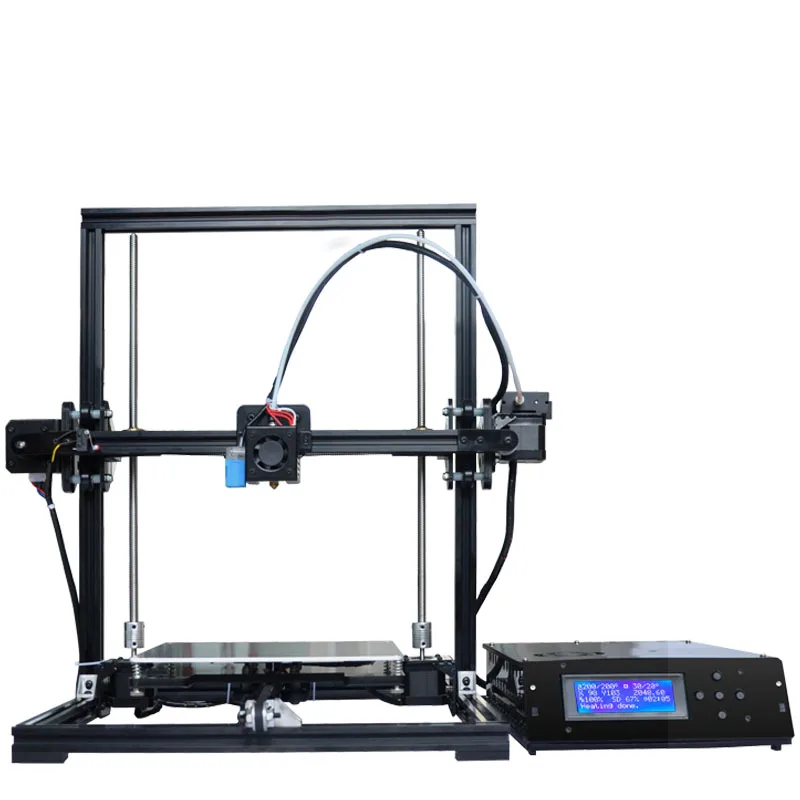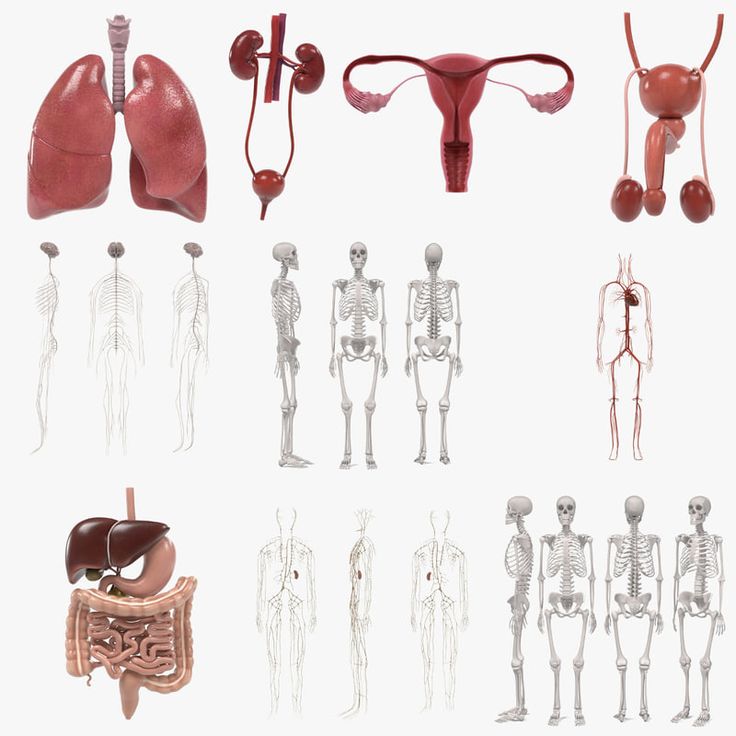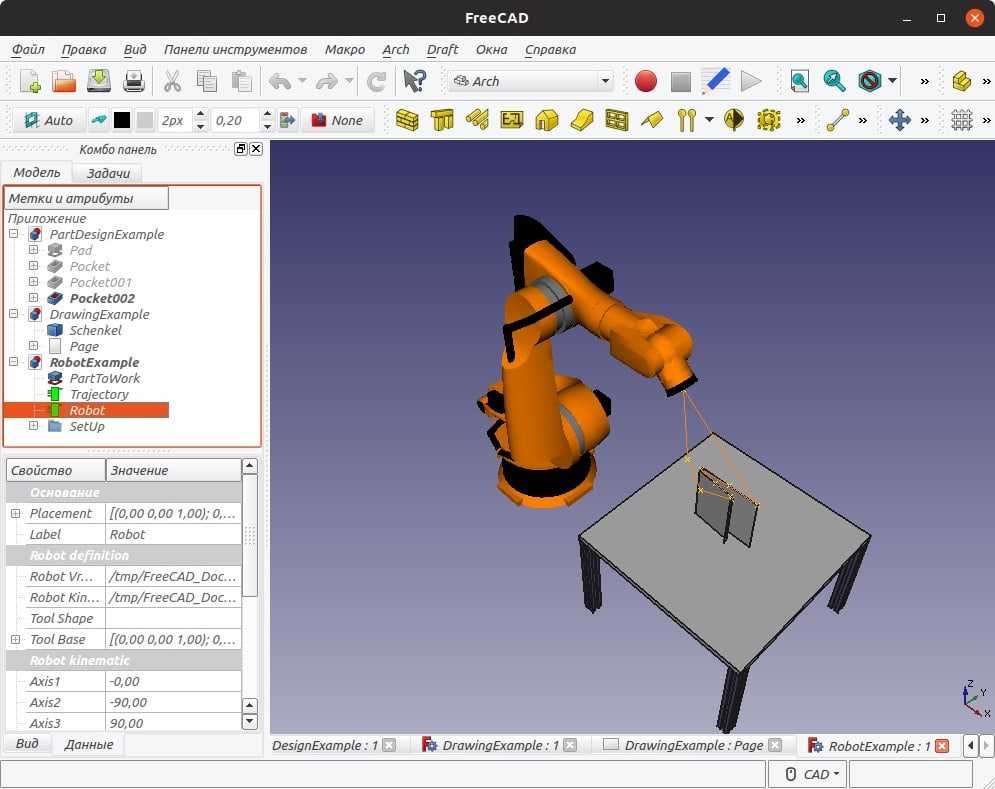Moon ray 3d printer
Pro S Dental 3D Printer
Dental 3D Printing. Simplified.
Schedule a Demo
Buy Pro S
Download Brochure
Compare Configurations
PrintOS Release Notes
The Pro S 3D printer is designed to improve the productivity of your practice. It's been meticulously designed to make it easy to learn, train, and delegate your in-office production workflow.
User Friendly
Designed exclusively for dental professionals, Pro S is simple to learn and easy to teach thanks to its user-friendly design.
Bolt Optimized
Our fastest printer just got faster. Now Bolt Optimized to deliver more smiles per hour.
Fast and Versatile
Fabricate dental parts for all kinds of treatments with wide materials compatibility and industry-leading speed.
Onboard Intelligence
Pro S combines smart sensors with workflow context to make sure your 3D printing workflow operates efficiently.
Leading Accuracy
Digital dentistry demands tight tolerances and smooth margins. Pro S is our most accurate 3D printer yet.
Designed for the needs of your practice
World Class Engineering
DLP Refined
Upgraded optics feature an all-glass construction that improves uniformity across the build platform. 100% balanced light output from this upgraded projector means your prints will fit even better. The beating heart of SprintRay Pro S, we’ve pushed DLP optical technology to new heights to bring you the absolute best in dental 3D printing.
All Glass Optics
Advanced Resin Tank
Advanced tracking using near-field technology allows Pro S to track the lifetime of each resin tank automatically. It's just one of the ways SprintRay is taking the guesswork out of the 3D printing process, helping you maximize each dollar invested in your digital workflow.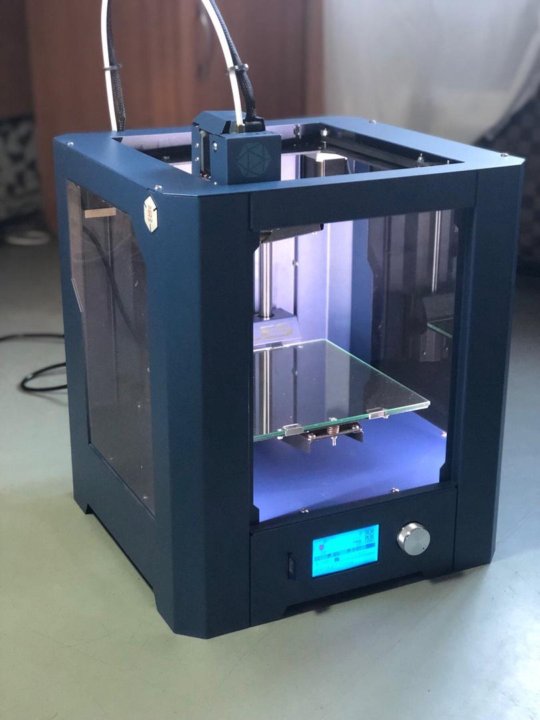
RFID Lifetime Tracking
Upgraded Chassis
An upgraded structure underpins Pro S, enabling improvements to Z-axis accuracy. Software-controlled adhesion protocol allows customization of curing layers for individual resins with even tighter tolerances. The new chassis connects directly to the tank cradle, eliminating issues caused by sprung tension and offering perfect layers for every print.
Improved Print Quality
Complementary Pairs
Ready for all types of in-office dental manufacturingPro95 S
Incredible speed and throughput meets industry-leading accuracy
Clear Aligner
Denture
Occlusal Guard
Study Model
Surgical Guide
Try-in Denture
Wax-up Model
Pro55 S
Ultra high resolution to meet the demands of restorative applications
Crown & Bridge
Implant Denture
Occlusal Guard
Shell Temps
Surgical Guide
Indirect Bonding Tray
Implant Analogue
Industry-leading Materials
The world's best 3D printer needs the world's best resinDiscover All SprintRay Materials
At SprintRay, our mission is to shorten and improve your digital workflow. Our 3D printing materials work in tandem with our hardware and software to deliver accurate, repeatable results and industry-leading mechanical properties.
Our 3D printing materials work in tandem with our hardware and software to deliver accurate, repeatable results and industry-leading mechanical properties.
Smart SprintRay Ecosystem
Frictionless 3D Printing Workflow
End-to-end Workflow
SprintRay Pro S is part of the full 3D printing ecosystem, which also includes cloud-based design and printing software, the Pro Wash/Dry automated cleaning system, and the world's most advanced post-curing with ProCure 2.
Designed Just for Dentistry
When you step up to SprintRay, you're joining a community of thousands of dentists who use our products every day to enrich their patients' lives. Our products are designed from the ground-up to empower your digital workflow.
What's in the box
- Pro S 3D Printer
- Smart Resin Tank
- Heated Build Platform
- Finishing Tools
- Quick Start Guide
- Warranty Card
- Power Cable
Get help buying
Have a question? Call a Specialist Call 1-800-914-8004.
Schedule a Demo
Find a SprintRay distributor
SprintRay works with with major dental sales channels to bring you the most seamless buying experience.
Find Your Distributor
MoonRay S Wireless 3D Printer – APAC Digital Dentistry
Revitalising the workflows of dental clinicians
MoonRay ushers in a new era of digital dentistry. Its seamless product ecosystem and customer support are the result of our commitment to the dental industry. It is both precise and fast, simple and powerful, technologically advanced and durable.
SprintRay Software Sensible, User Friendly, FastWhen designing your application, you won’t need to worry about creating an elaborate support structure. Our software’s advanced support-generation algorithm does all the hard design work so that you can focus on what you love. |
Precise and Efficient High Resolution OutputMoonRay's DLP projector technology is perfect for printing dental applications. We've maximised consistency to preserve every detail and ensure the accuracy of your parts while offering industry-leading speed. |
Hi-Def Materials Biocompatible and BeautifulSprintRay resins have been formulated specifically for dental applications. Our surgical guide resin is fully biocompatible, and our coloured resins show the smallest details in your models. SprintRay printers are also compatible with NextDent resins for added versatility. |
| Million Pixels. Brilliant Reality. ADVANCED DLP PROJECTOR. At the core of each MoonRay is our patented UV DLP projector, RayOne. We created RayOne so every MoonRay could be equipped with a well-calibrated, long-lasting projector. | |
| Say Goodbye to Consumable Tanks INCREDIBLY DURABLE RESIN TANK. We’ve put an end to costly resin tank maintenance — no more replacing your resin tank regularly or changing the PDMS layer. You can focus on printing amazing models instead of spending time on machine maintenance. MoonRay’s durable resin tank lasts up to 25 times longer than the resin tanks of similar 3D printers, saving you time and money. |
SprintRay Software makes printing simple. Add your models and let the software do the work for you. Our software also includes many optional adjustable settings, allowing your printing process to be as simple or as advanced as you'd like it to be.
SprintRay Software's advanced support-generation algorithm adds strong, correctly placed supports in one click. Our supports feature easy-tear technology, which means that they easily snap off under pressure, reducing the time needed to finish your models. Plus, add and delete supports as needed.
Our supports feature easy-tear technology, which means that they easily snap off under pressure, reducing the time needed to finish your models. Plus, add and delete supports as needed.
| The Workflow Revelation The MoonRay S comes with everything you need to bring your dental practice into the world of modern digital dentistry.
|
A 3D printer for construction on the Moon is being developed in Samara
News
Samara scientists are working on a prototype heliolithograph - a 3D printer for printing sand using sunlight. The apparatus is conceived as an additive facility for the production of elements of building structures on the Moon.
Work on the heliolithograph is carried out under the agreement of 2016 between the Scientific and Production Association named after S.A. Lavochkin and Samara State Technical University (SamSTU).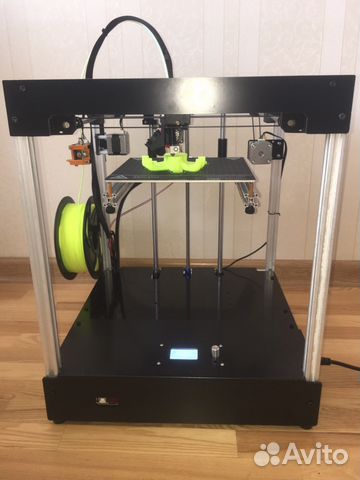 Last autumn, the project was among the winners of the international festival of children's and youth scientific and technical creativity "Ot Vinta!".
Last autumn, the project was among the winners of the international festival of children's and youth scientific and technical creativity "Ot Vinta!".
The idea is layer-by-layer sintering of sand, that is, the general principle of operation is similar to selective laser sintering, but instead of polymers or metal-powder compositions, it is planned to use lunar regolith, and instead of lasers, solar energy. The device is a CNC machine and four mirrors that focus sunlight at one point. Positioning is carried out by moving the platform with consumables in three planes.
“The apparatus device is simple: its upper part is engaged in the fact that it constantly turns on the Sun and sends focused sunlight to the same point relative to this platform, and its lower part is, in fact, a simple machine tool that moves this device ”, - says Anton Rakov, Associate Professor of the Department of Innovative Design at SamSTU.
According to the Zvezda TV channel, “the studies were carried out on real lunar soil, which was delivered to the Samara Technical University especially for this project.” It should be assumed that the mentioned studies did not include practical 3D printing of regolith due to its shortage. Judging by the report, the device is supposed to be used as a factory for the production of bricks for the construction of protective structures, which will be laid by special robots.
The idea of a heliolithograph was borrowed from the Polish engineer Markus Kaiser ( in the illustration above ), who successfully tested a prototype of a similar 3D printer right in the desert in 2014 ( see video ), and may well find application, if not on the Moon, then on Earth. As Zvezda rightly notes, lunar bases so far exist only on paper. We only add that the same can be said about domestic launch vehicles for the lunar program. The preparation of the draft design of the Soyuz-5 complex, the blocks of which are planned to be used to assemble lunar rockets, should be completed only this year, while testing of superheavy launch vehicles will begin no earlier than 2027 at best.
The preparation of the draft design of the Soyuz-5 complex, the blocks of which are planned to be used to assemble lunar rockets, should be completed only this year, while testing of superheavy launch vehicles will begin no earlier than 2027 at best.
Do you have interesting news? Share your developments with us, and we will tell the whole world about them! We are waiting for your ideas at [email protected].
Follow the author
Follow
Don't want
4
More interesting articles
5
Subscribe to the author
Subscribe
Don't want
New systems are initially tailored for the extended functionality of the Klipper firmware and equipped with 32-bit e. ..
..
Read more
four
Subscribe to the author
Subscribe to the author
Don't want to
The German company 4D Concepts GmbH has been providing 3D printing services for more than twenty-five years, and ...
Read more
sarkazm
Loading
04/01/2016
39782
68
Follow the author
Subscribe
Don't want
News from the world of printing in a short line
FDplast announced the release of a free...
Read more
Russian scientist on the prospects of 3D printing This was stated in an interview with RT by Vladimir Kuznetsov, Associate Professor of the Department of Materials Science of Non-Ferrous Metals at NUST MISiS, Head of the FabLab Digital Production Laboratory.
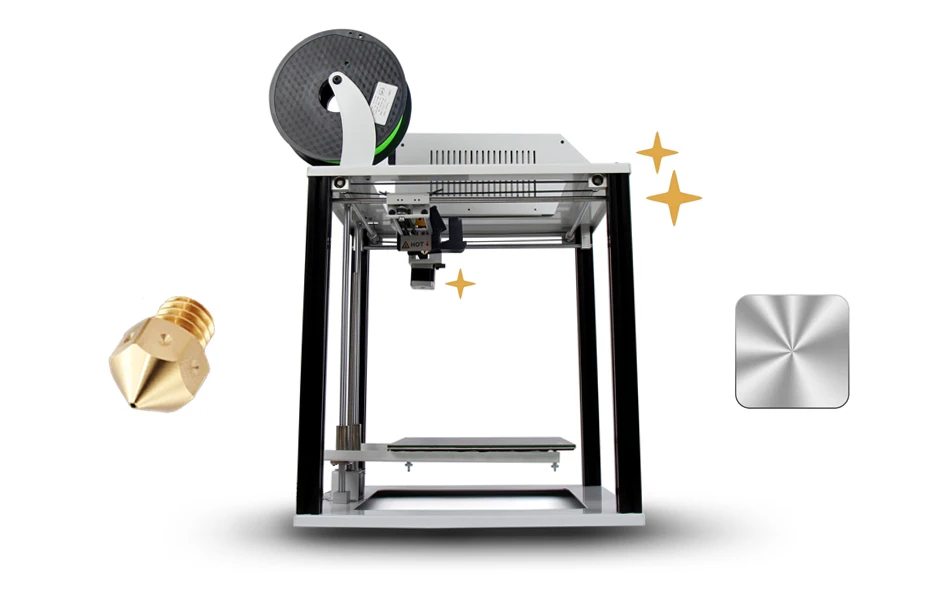 So the scientist commented on the recent statement by the European Space Agency about plans to use lunar metals for 3D printing. He noted that parts printed on 3D printers are already being sent into space. The scientist also spoke about the types of 3D bioprinting and the properties of materials created using additive technologies. According to him, the most important prospect for the development of 3D printing is its use in personal production.
So the scientist commented on the recent statement by the European Space Agency about plans to use lunar metals for 3D printing. He noted that parts printed on 3D printers are already being sent into space. The scientist also spoke about the types of 3D bioprinting and the properties of materials created using additive technologies. According to him, the most important prospect for the development of 3D printing is its use in personal production. — It was recently revealed that the European Space Agency (ESA) plans to test 3D printing technologies using metals from the surface of the Moon. What can be printed in space and what materials will be used for this?
- The European Space Agency is now very far from the Moon. It is important to understand that the now popular term "3D printing" is often applied too loosely. The last high-profile European project related to the Moon and 3D printing involved the construction of a lunar base using regolith (the surface layer of loose lunar soil. - RT ). The project with the lunar base involved the use of elements of additive technologies (technologies for building up and synthesizing objects. - RT ), but the label “3D printing” glued to it is completely illegal.
- RT ). The project with the lunar base involved the use of elements of additive technologies (technologies for building up and synthesizing objects. - RT ), but the label “3D printing” glued to it is completely illegal.
At the same time, the very idea of using local materials for the production of anything on the Moon, Mars or Pandora is the only correct one. 3D printing will certainly play an important but not exclusive role in these projects. The European Space Agency with such conceptual projects makes a kind of reserve for the future.
Also related
From a 3D printer to an airplane: which industries use Russian innovations most actively
Aviation, pharmaceuticals, chemical industry, production of electronic and optical equipment are leading in Russia in terms of the number of... threads - RT ) is quite ready to work on the space station and in zero gravity conditions and can be used, for example, for the manufacture of fixtures and experimental equipment on the ISS. The problem is the material that will have to be delivered from Earth. The question is what is more efficient: to deliver finished parts from Earth or to deliver the printer and consumables into space.
The problem is the material that will have to be delivered from Earth. The question is what is more efficient: to deliver finished parts from Earth or to deliver the printer and consumables into space.
— When will 3D technologies be launched in space and how will the use of 3D printers on the Moon differ from their use on Earth?
— Rockets with 3D printed parts are already being launched into space today. On the Moon, different 3D printing technologies can be used, both adapted from the Earth and specially developed for new missions. To solve the problems of building outer shells of lunar bases, for example, selective sintering technology can be used (the process of obtaining solid and porous materials from fine powdery or dusty materials at elevated temperatures and (or) high pressure. - RT ), in which the material will be lunar soil, and the energy source will be sunlight.
- An employee of the Moscow laboratory of 3D Bioprinting Solutions holds a thyroid gland printed on a 3D printer.

- RIA News
- © Kirill Kallinikov
— What is the difference between 3D printed models and parts made using traditional technologies?
- There are many 3D printing technologies, and there are different materials for them. For these technologies and materials, it is more correct to use different references from the world of traditional technologies. In general, the strength of printed products, with rare exceptions, is noticeably inferior to the strength of products made from the same or similar materials, but obtained by traditional methods. In the most common technology (Fused Filament Fabrication), one of the key features is a strongly pronounced anisotropy of properties (a characteristic of a physical body, which consists in the fact that its various properties in different directions manifest themselves quantitatively differently.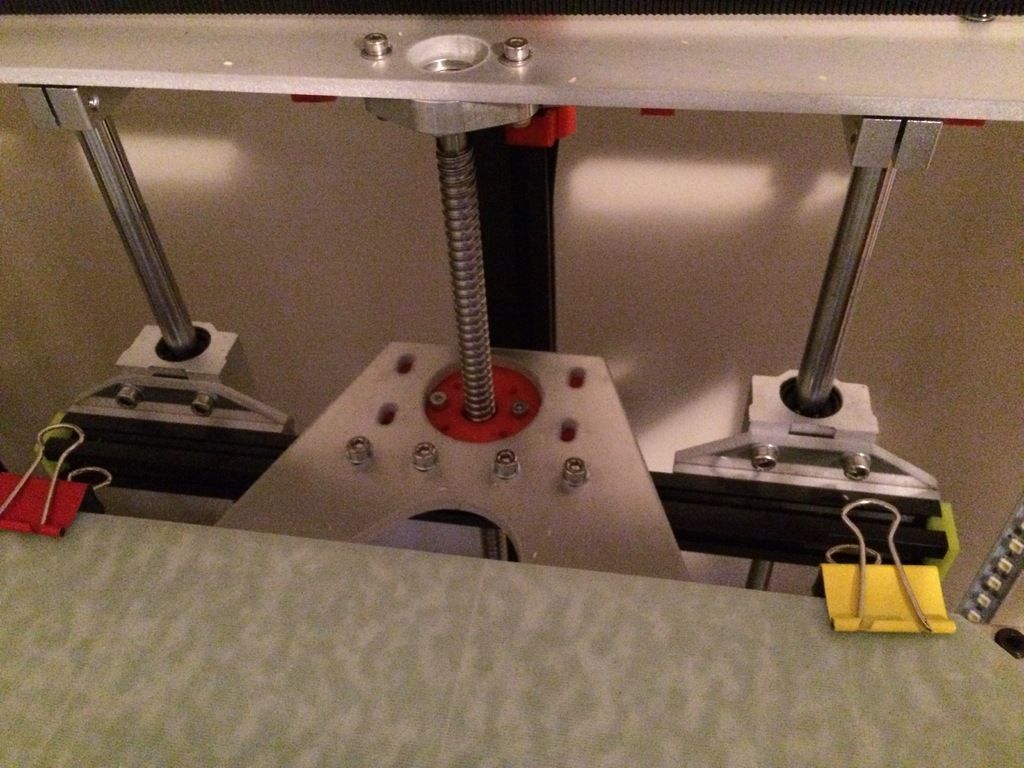 - RT ).
- RT ).
This means that the properties of the product depend on the direction of the applied external forces relative to the orientation of the product when printed. The printed product is not monolithic, it is formed by polymer threads laid in parallel layers. Along the layers, the properties are one, across - others. As a rule, the strength across the layers is about 40% of the strength along the layers, but this difference can be significantly reduced or even eliminated.
— In the coming decades, bioprinting could be the next major milestone in healthcare and personalized medicine. Advances in 3D bioprinting have included the creation of human skin, cartilage, bones, blood vessels, and internal organs such as the heart and kidneys. How safe are printed organs and can they be transplanted into humans? Can organ printing replace traditional transplantation?
— Conventional transplantation has never been and probably never will be safe.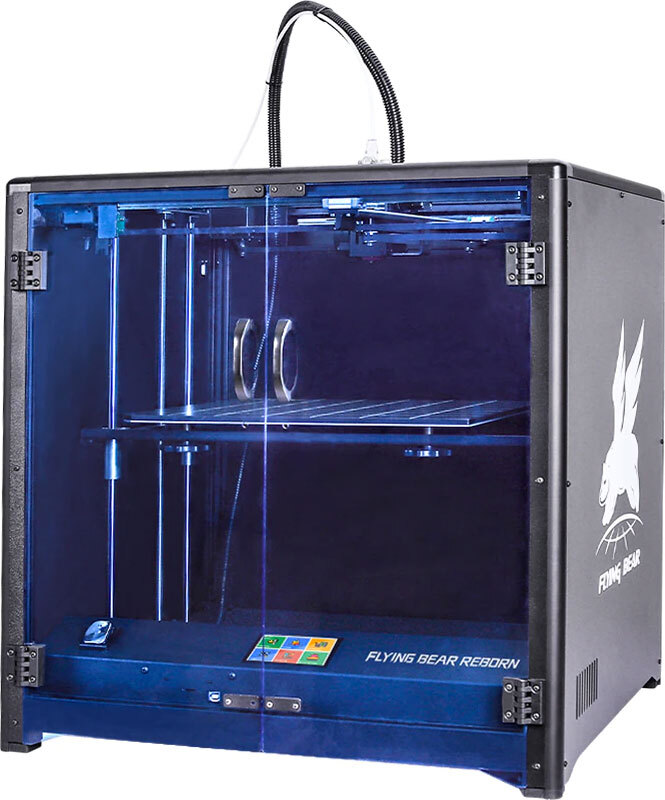 The transplanted organ is perceived by the body as a foreign object and is subjected to constant attacks by the immune system. In this sense, artificial organs grown from the host organism's own stem cells and printed on a 3D bioprinter can become safer than "traditional" solutions.
The transplanted organ is perceived by the body as a foreign object and is subjected to constant attacks by the immune system. In this sense, artificial organs grown from the host organism's own stem cells and printed on a 3D bioprinter can become safer than "traditional" solutions.
- 3D printing can produce products such as chocolate, pasta, sugar and more. Recently, Japanese scientists have 3D printed a piece of beef using genetic modification technology. Why print products?
— In edible 3D printing, it is important to distinguish between two completely different directions. The first is shaping the edible material into the desired shape, such as printing edible cake decorations.
- 3D printer prints a snowflake out of chocolate
- globallookpress.com
- © ZUMA Press / Rodrigo Reyes Marin
The second direction, which has a very indirect relation to 3D printing in its classical sense (toolless production of simple and complex shapes by layer-by-layer addition of material), implies not so much giving the product the necessary shape, but rather the synthesis of the material.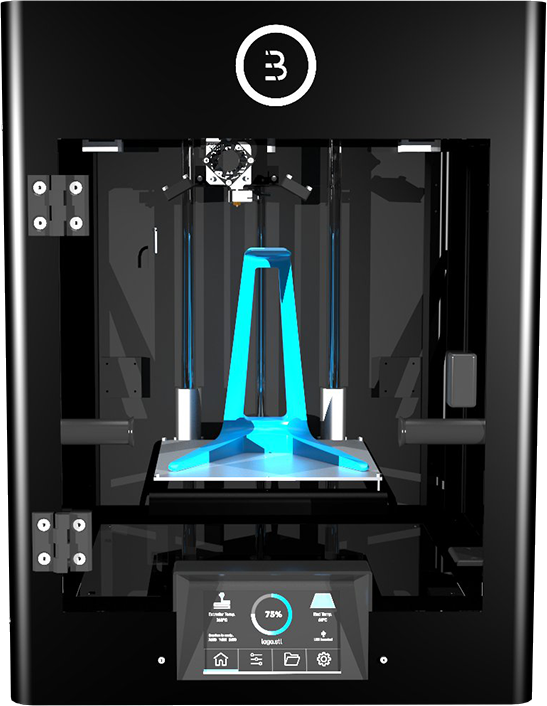 Many of these technologies are close to bioprinting technologies. Why grow a whole cow when you can only "grow" a steak from stem cells?
Many of these technologies are close to bioprinting technologies. Why grow a whole cow when you can only "grow" a steak from stem cells?
— In the modern world, 3D printers are used in various fields: mechanical engineering, architecture, small-scale production and many others. What are the prospects for this area?
- Digital additive technologies complement subtractive (traditional methods of production and processing, where the appearance of the product is formed by removing excess material. - RT ) and deformation (traditional methods of processing materials by pressure. - RT ) in all sectors of modern industry. We are currently experiencing major changes in the industrial order, but it is a mistake to link this solely to the advent of 3D printing. The revolution lies in the replacement of digital manufacturing technologies with analog ones, and not in the replacement of 3D printers with milling machines or stamping presses.
The most important development of 3D printers, as well as other modern digital production machines, is personal production, and this concept has two meanings. First, with the help of digital machines, it is possible to efficiently produce personal products - products in a single copy, needed by a single person. And secondly, a 3D printer is a personal means of production.
First, with the help of digital machines, it is possible to efficiently produce personal products - products in a single copy, needed by a single person. And secondly, a 3D printer is a personal means of production.
For several centuries the world was divided into those who own the means of production and everyone else, but today this boundary is blurring. An inexpensive home (personal, desktop, amateur) 3D printer has very low productivity, but it is easily compensated by a large number of these printers, which allows you to start moving in the direction from mass production, which cannot exist without mass consumption, to distributed personal production.
- 3D printed face shields
- RIA News
- © Ekaterina Chesnokova
In the midst of the first wave of the global coronavirus pandemic, when the epidemic and related restrictive measures instantly destroyed the logistics chains of production and supply of goods, the whole world faced a shortage of personal protective equipment: masks, face shields, gloves.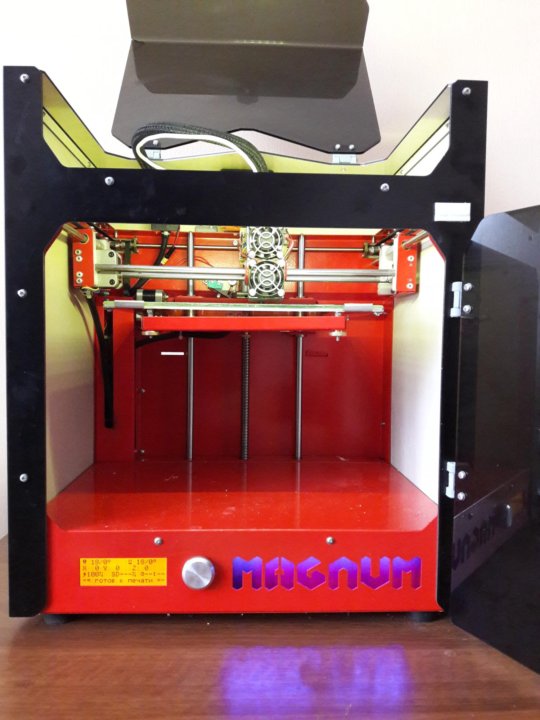 These products were not enough for doctors and medical staff, and “makers” came to the rescue - the owners of home 3D printers. They worked as volunteers and set up the production of various funds and their donation to doctors. Thousands of amateur 3D printers went online across the world - in the US, India, Peru and Russia - and, according to statistics from the non-profit organization Open Source Medical Supply, produced more than 40 million units of scarce products before the system of global distribution and mass production was restored.
These products were not enough for doctors and medical staff, and “makers” came to the rescue - the owners of home 3D printers. They worked as volunteers and set up the production of various funds and their donation to doctors. Thousands of amateur 3D printers went online across the world - in the US, India, Peru and Russia - and, according to statistics from the non-profit organization Open Source Medical Supply, produced more than 40 million units of scarce products before the system of global distribution and mass production was restored.
— How are Russian 3D printing technologies developing and what 3D printers are used in Russia?
- 3D printing technologies have been developing since the mid-1980s, serious progress came in the 1990s. At that time, both the USSR and Russia had very limited opportunities to create new science-intensive technology. However, the Institute for Problems of Laser and Information Technologies of the Russian Academy of Sciences after 1991 produced a stereolithography installation (an additive manufacturing process, the result of which is achieved through the photopolymerization of resin.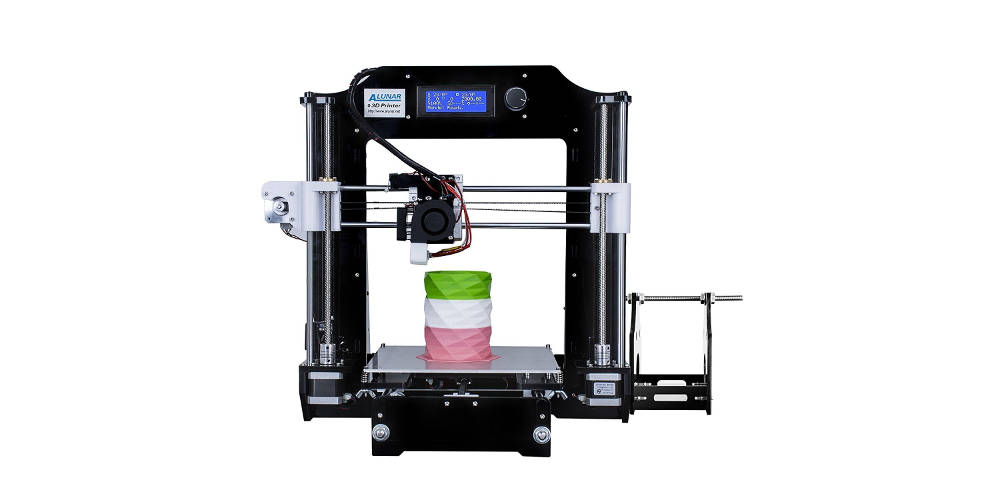 - RT ). In the last decade, there have been enough large and small developers and manufacturers of 3D printers in Russia, many solutions are competitive on the global market.
- RT ). In the last decade, there have been enough large and small developers and manufacturers of 3D printers in Russia, many solutions are competitive on the global market.
- Recently, the AMT company, a resident of the Skolkovo Foundation, announced that it will build a village of 12 houses using a 3D printer in the Yaroslavl region. How will printing be carried out and will it be possible to live in such houses?
— Construction printing is a separate area of digital additive technologies, and it is also developing in different ways. The most popular scheme now is printing with concrete or geopolymer concrete. Another scheme developed in Russia is printing with a special polymer gel that hardens under ultraviolet illumination.
There are two different approaches. In the first, a mobile 3D printer is deployed on a construction site and prints the walls of a building directly onto the foundation. The second approach is to print the modules of the future building in the factory with their subsequent delivery to the construction site.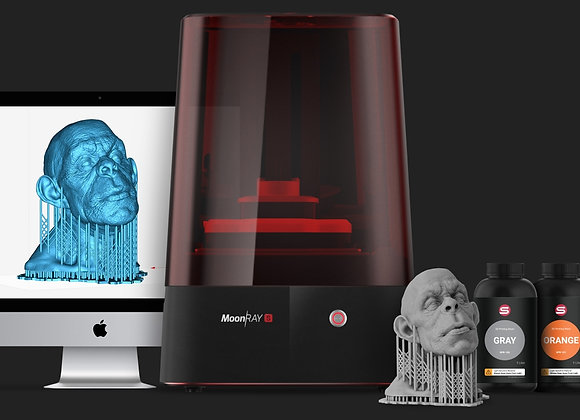 People already live in houses of both types.
People already live in houses of both types.
Related
Eco-friendly and safe: Russian scientists have created invisible labels to protect goods from fakes
Russian scientists have created invisible polymer gel tags that can be used to protect against counterfeiting. They represent...
— Researchers from Loughborough University (UK) have developed a new 4D printing method. What kind of print is this?
- 4D printing is a popular and common term that can mean very different solutions. The most popular interpretation: 4D printing is the printing of products whose shape is not static. An example of 4D printing is the simultaneous printing of materials with different properties. Rigid and elastic sections are formed in the product, thus the behavior of the product under load is programmed. 4D printing allows you to print objects with dimensions larger than the printer on which it is carried out.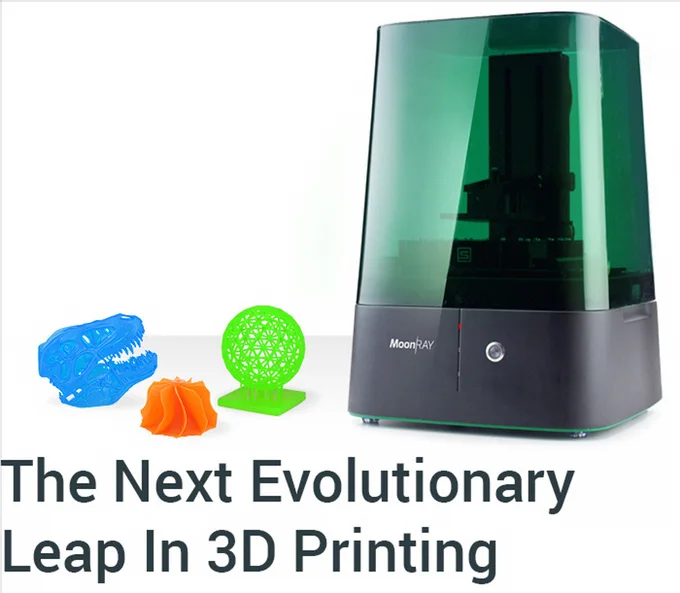 The object extracted from the printer unfolds, increasing in size. A possible end goal for the development of 4D printing is the printing of a robot that can itself get out, drive out, crawl out or fly out of the printer that printed it.
The object extracted from the printer unfolds, increasing in size. A possible end goal for the development of 4D printing is the printing of a robot that can itself get out, drive out, crawl out or fly out of the printer that printed it.
- Parts printed on a 4D printer
- © Legion-media.ru / Xinhua/Sipa USA
Can 3D printers help us explore other planets like Mars? Is it possible that during colonization we will be able to create 3D parts directly from the useful resources found on the planet?
- We need to stop dreaming about colonization and terraforming (the theory of the hypothetical possibility of changing climatic conditions on space bodies. - RT ) other planets. It is necessary to work on terraforming our native Earth. The Industrial Revolution and its main achievements - mass production and consumption - have led to the fact that our environment has become toxic to life.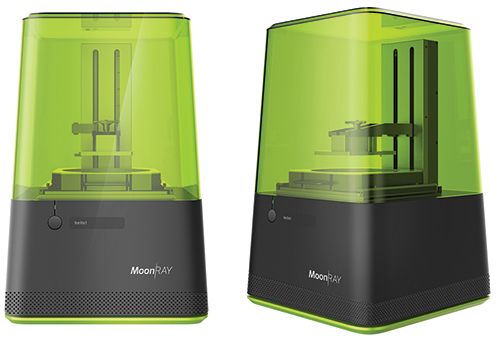


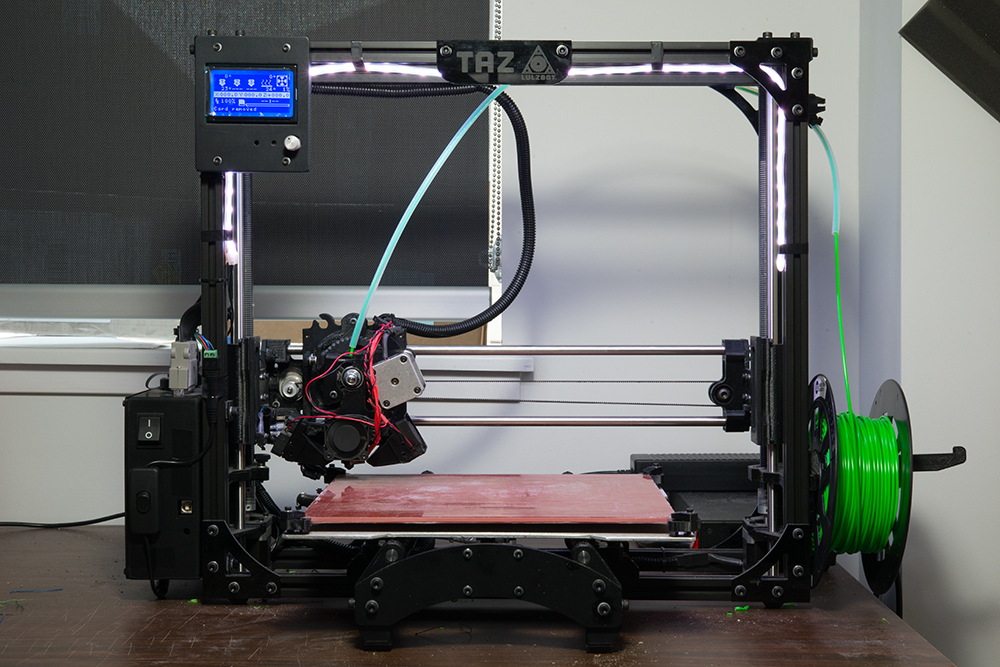
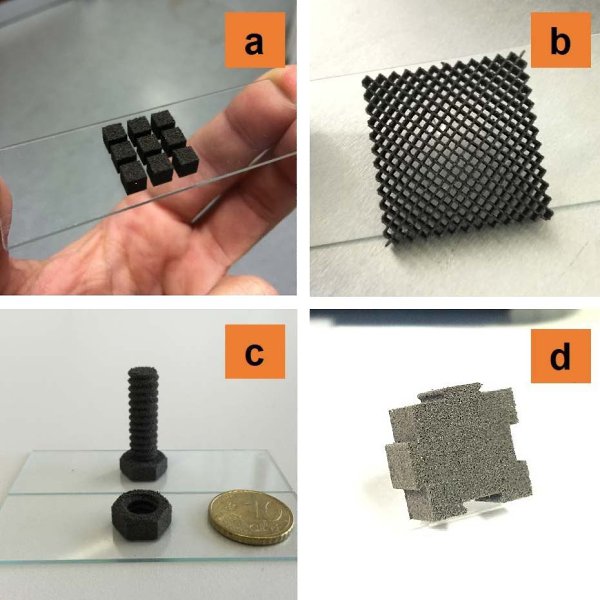 RayOne hits the correct light wavelength consistently across the build platform for improved resin-curing control and dimensional stability.
RayOne hits the correct light wavelength consistently across the build platform for improved resin-curing control and dimensional stability.
